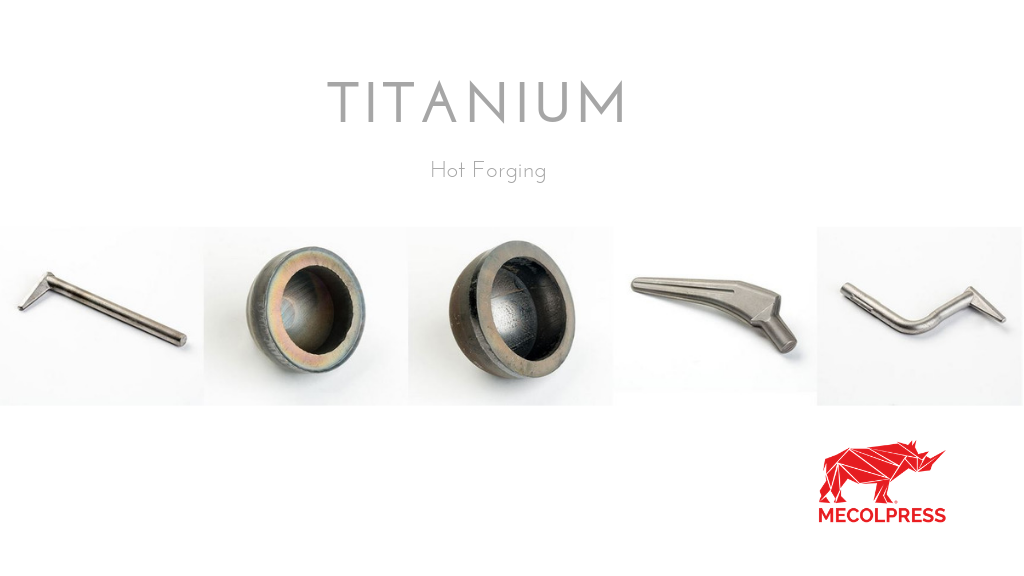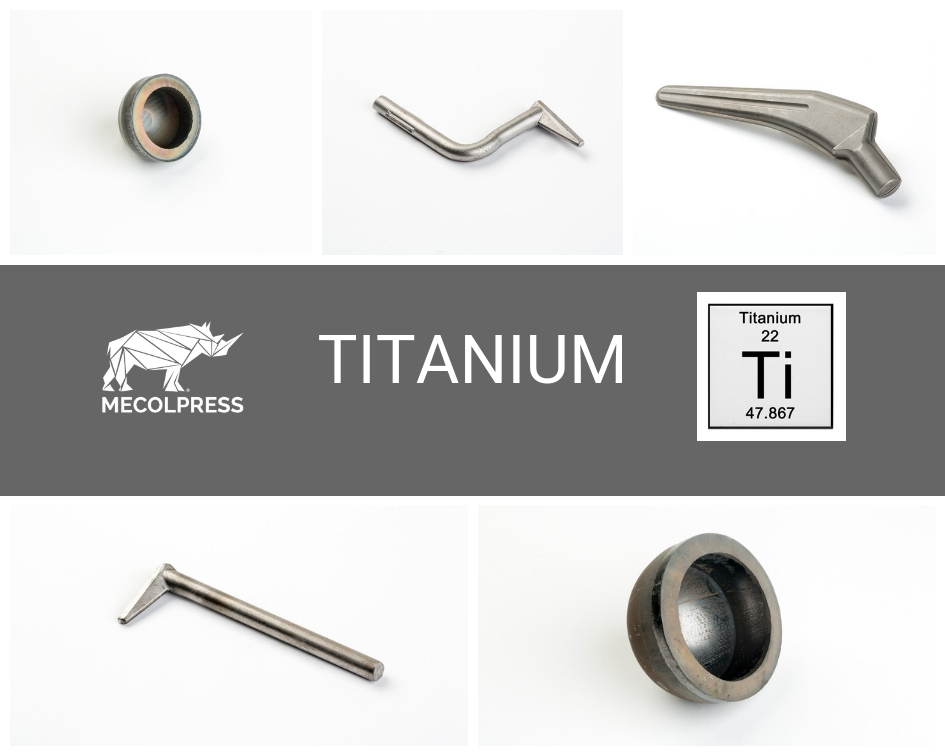
Mecolpress range of presses
For metals hot forging it is possible to use both mechanical and hydraulic presses. Mecolpress proposes high-tech and of different types machineries in order to satisfy nearly all production needs.
Mecolpress presses are indicated for copper, brass, steel, titanium and aluminum hot forging.
Mechanical presses
Among Mecolpress hot forging mechanical presses there are eccentric mechanical presses that are classified according to the nominal force. SOV model for vertical forging: they require an average energy consumption and are characterized by their high productivity. Instead, the SEO presses are developed for the forging of parts with coring and are divided in:
- SEO: (at single cycle): presses for forging with horizontal coring, high energy, medium Productivity
- SEO- CVE/CS: (at continuous cycle): presses for hot forging with horizontal coring, high energy, high Productivity
- SEO-F: (a ciclo singolo): (at single cycle): presses for forging with vertical coring, high energy and medium productivity
Another type of mechanical press offered by Mecolpress is the screw press.
The screw presses are divided according to the screw diameter and there are three available models:
- TDS: direct control with electrical servomotor. The screw diameter goes from 240 mm to 525 mm.
- Dellavia: friction discs control. The screw diameter goes from 130 mm to 460 mm.
- Osterwalder: friction discs control. The screw diameter goes from 150 mm to 220 mm.
Hydraulic presses
Our hydraulic presses are part of ME series and are characterized by their dies closing force that goes from 100 to 500 Tons.
These are the tonnages we have realized so far, but we can realize tonnages with greater closing force, as well. The horizontal coring punches force goes at present from 30 to 350 tons and also in this case, upon request, it is possible to produce the machine with a greater force than the indicated one.
Presses for parts coining and calibration
Mecolpress offers to its customers that need presses for parts coining and calibration the knuckle joint press of PG series, that are characterized for their low stroke and very high productivity.
These are classified according to their nominal force.
Machineries for parts trimming:
Mecolpress trimming machines are classified according to nominal force, as follows:
- PO:trimming machine with single station, low productivity, generally used for manual loading, H structure. Tons from 10 to 60.
- S: trimming machine with multiple stations, provided with rotary station with hydraulic motor. It is characterized by a medium productivity rate and it is used for manual or by automation loading, H structure. Tons from 10 to 60.
- E: Trimming machine with multiple stations, equipped with rotary table with electrical motor, high-medium productivity, more suitable for loading by automation or robot, C structure. Tonnage from 10 to 60.
Thanks to the variety of offered machineries, our sales department can suggest you the press that best fits for your project according to the type of part to realize and according to the specific conditions in which the customer operates.

Hot forging and titanium machining
Titanium is a particular resistant material, often used for hot forging. Mecolpress proposes furnaces and both hydraulic and mechanical presses suitable for the forging of titanium alloys of parts destined to different application sectors.
Mecolpress offers to its customers a wide range of presses for titanium hot forging and our sales department is always ready to offer a customized advice to suggest the best machinery according to the used alloy to forge and to the type of geometry the customer wants to obtain.
Titanium features
Titanium is lighter and much more resistant than steel: for this reason, it is often used in the medical sector for the realization of particular prothesis.
Characteristic features of titanium are:
- low specific weight,
- hardness,
- biocompatibility,
- non-toxicity,
- low thermal conductivity,
In addition to be widely used in the medial sector, titanium, thanks to its features, is a metal extremely versatile that can be used in many other sectors, including automotive, aerospace, industrial sector of mechanics and applications in field of sport.
Titanium forging: Mecolpress machines
The temperature for titanium billets forging is about 950°C and the one of the die is about 250°C, instead. The hot forging of titanium parts is very well suited to obtain the desired parts, since by using the right equipment it is possible to avoid all the problems this material should present during the melting.
For this reason, our sales department is at disposal of our customers in order to advice for the choice of the most suitable hydraulic or mechanical press and to suggest the modes of operations. Mecolpress can carry out a simulation test at our factory, thanks to Deform software, and a real forging test so that to grant to our customers that the chosen machine can forge high quality parts.
For further information regarding press models suitable for titanium hot forging, please refer to our sales managers that will be glad to examine in depth the matter.

Titanium and its features
In addition to be the fourth metal for its great abundance, titanium is the ninth element in order of industrial usage. It is preceded – obviously – by aluminum, iron and magnesium.
With atomic weight of 47,88 it is light and robust: its features combine high resistance, tenacity, rigidity, low density and a good resistance to corrosion.
Its low density (about 60% of iron density) can be strengthened through alloy elements and deformation processes. It is non-magnetic and it has a good characteristic of thermal exchange. Its coefficient of thermal dilation is a little bit lower than that of the steels and it is less than half of that of aluminum. Further useful trait is the high melting point of 3135° F (1725 ° C), about 400° C higher than that of the steel and about 2000 ° F higher than that of aluminum.
Titanium can be passivated, and it resists to the attacks of acids and base better than the stainless steel. The excellent resistance to corrosion and biocompatibility, combined with mechanical resistance, make it suitable for the chemical and petrochemical, sea environment and biomedical applications.
Regarding the electrical conductivity, the titanium’s one is 3,1% of the coppers one. So, titanium is not a good electrical conductor and it offers a high electrical resistance.
For a more complete vision, here you can find a table with the summarized titanium properties:
| Main titanium’s features | |
| Specific weight | 4.5 g/cm3 |
| Density | 4500 Kg/m3 |
| Melting temperature | 1680 °C |
| Thermical conductivity | 17 W/m°C |
| Linear thermal expansion coefficient (20-100 °C) | 8.9*10-6 /°C |
| Electrical conductivity | 3% IACS (copper 100%) |
From pure titanium to the alloys
The commercially pure titanium can be classified in 4 grades, that are essentially different for:
- resistance;
- usability.
In a nutshell, when the grade raises, the first increases and the second decreases.
The titanium alloys are divided into:
- Commercially pure titanium (CO): It’s the grouping that contains the highest proportion of titanium. Typical features are the high tendency to corrosion and mechanical features of medium-low value.
- α alloys: they present good weldability and maintenance of the mechanical characteristics also at high operating temperature, thanks to the generally high content of aluminum. The usage in components particularly solicited is impeded by the fact that these cannot be submitted to any thermal treatment.
- b alloys: they guarantee the best mechanical features. These have very restricted or null weldability, these are used in the constructions of bolts and springs and in strongly solicited parts.
- α+b alloys: in the group there are the most used alloys with elevated mechanical characteristics and largely used in the production of airplane’s components.
The titanium alloys, that are rather numerous, are classified in grades.
In the traditional manufacture, as also in the 3D printing, the following types of alloys are especially used:
- the Ti6Al4V (grade 5)
- the Ti6Al4V ELI (grade 23).
Among all titanium alloys, the grade 5 is the most used: engine parts, structural parts of airplane and automotive, fastening aerospace elements, and sport equipment of high quality.
The Ti 6Al4V ELI, or simply the grade 23, is the purer version of grade 5. Thanks to its biocompatibility, to its good resistance to stress and to the low module, it can be used in dental and health care sector.
Hot and cold forging of titanium
Hot or cold forged, titanium consents to create special processing of excellent quality.
In particular, the hot process guarantees significant advantages such as:
- Increase of resistance: the longitudinal continuity, even in the critical transit area between head and stem, is kept unchanged. The raw material can be shaped, by avoiding the cuts typical of the traditional turning works. The phenomenon of detachment between head and stem decreases and it is frequent in the wrought that are submitted to excessive stress. The absence of cut fibers increases the resistance.
- Saving of raw material; optimization of costs. Swarf are not created during the process: the raw material is not wasted and the price of the product decreases.
Advantages and disadvantages of titanium usage
Advantages:
- low specific weight
- Hardness
- Resistance to corrosion
- low thermal conductivity
- Radiolucency
- Biochemical inert
- Biotolerance
- Not toxicity
- Absence of taste
- Resistance to chewing
Disadvantages:
- Not enough precise melting
- Formation of a layer of oxide on the surfaces
- Detachments of ceramic covering
- Inner porosities
- Surface porosity that allow higher accumulations of plaque than the traditional alloys.
The brief overview of information about a such promising metal (for booming sectors like health care, for example) like titanium, shows how all the above mentioned disadvantages can appear essentially just in case of melting, and so these are totally avoided by the hot forging with appropriate furnace or press, alongside an expert consultant that can address the choice of the proper machine, and suggest the working modalities and of course guarantee an impeccable customer service that avoids criticalities and tensions at the moment of operativity starting.
